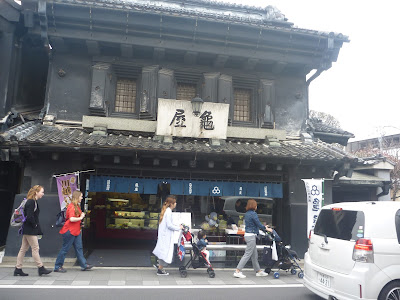ONO Shinobu and Berhard Karlgren
TANAKA AkioIn December 1979, I submitted the post-graduate thesis on Japanese Buddhist priest Kukai (774-835)'s maiden work
Sangoshiiki that comparatively considered the three regions, Confucianism, Taoism and Buddhism. Probably in January 1980, I met with Prof.
ONO Shinobu at the corridor of university. He said to me that he read my thesis and my thinking method using at the thesis was resembled in the method of
Bernhard Karlgren at his paper
"The Authenticity and nature of the Tso Chuan" 1926. He succesively talkedto me, "TANAKA, did you read the paper?" I promptly answered " Professor, No."
My thesis was presented the other prof. who specialist of the old Buddhism in Japan and probably he sent my thesis to his dear fried ONO. My approach was the study on the appearance frequency distribution of all the expletives appeared in the text.
I knew this famous Sweden sinologist's name earlier and already bought one of his important work
Grammata Setica Recensa, 1957 in the early 1970s at
Kaifu Shoten Book shop in Kanda, Tokyo. But the paper shown by ONO was perfectly unknown at that time. ONO invite me to his study room and handed me the book Saden Shingi Ko" that was the translation of Karlgren's paper by ONO and published in 1939 from Bunkyudo Shoten Book shop at Hongo, Tokyo, which was one of the leading publisher in the field of Chinese classics in 1930s.
ONO was one of the scholar on Chinese literature from Yuan dynasty to the modern China and the member of
Chugoku Bungaku Dokokai, Chinese Literature Society in Japan that led the study of modern Chinese literature in Japan from 1940s. with his colleagues TAKEUCHI Yoshimi, TAKEDA Taijun and the like. In 1980s he had engaged in the translation of long novel,
The Journey to the West in the Ming dynasty all the time of his non-university's work.
Going back to the past, I received ONO's lecture " Chinese literature and Modern Japan" at his study room or dean room, who was the dean of the faculty for humanities department. In my memory he lectured precisely to Japanese novelist ODA Takeo, now not famous recently.
Karlgren's book was difficult for my talent at that time but somehow read over and gave back to ONO deeply appreciating his kindness. And some years later in Kanda, Tokyo, I found this Karlgren's book and bought. The book shop's name is
Yamamoto Shoten, one of the long established Chine classic book shop in Kanda. The date is
2 November 1982 by the receipt put in the book.
One day probably in spring 1980, on the train on the way home, I met ONO and told him on his the new lecture on
Yuanqu, Yuan dynasty's poems that was frequently said very difficult for modern readers.
I said to him, "Wonderful lecture for excellent undergraduates." He returned definitely," Very important to study such a hard work for me still now."
ONO Shino died suddenly by disease in 18 December 1980, age 74. The conversation at the train was the last hearing of this profound scholar.
Tokyo
3 March 2015
Sekinan Library






